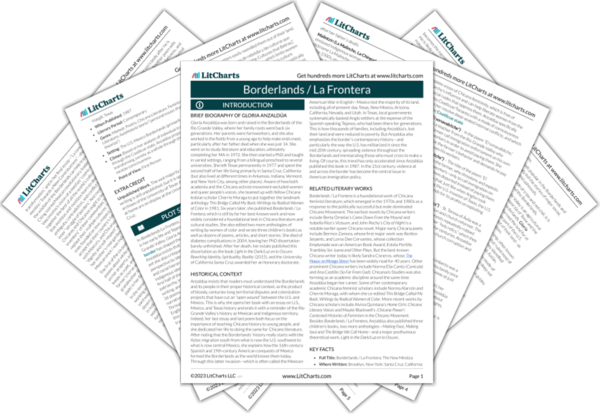This poem fondly looks back on the unique, border-crossing experience of young love between Chicana lesbians—a kind of romance that, to Anzaldúa, arguably feels more like home than her real home ever could. The positive, nostalgic tone of this poem generally contrasts with the rest of Anzaldúa’s poetry. Indeed, whereas her other poems about sexuality focus on what is particular about queerness, this one focuses on the universal aspect of queer love: the sense of fulfillment, yearning, and loss that it shares with all other kinds of love. That said, it still does reference the suspicion and exclusion that lesbians face in Chicano communities.
